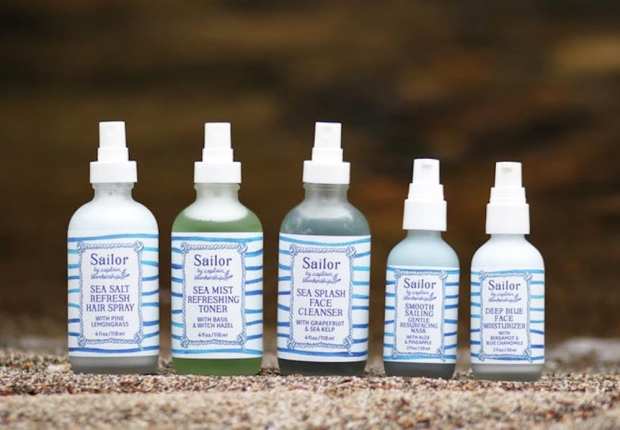Captain Blankenship And Stepping Out Of The Wholesale Shadows

When it first launched in 2009, clean beauty brand Captain Blankenship’s offering was still a very niche product. While “all-natural,” “organic” and “paraben-free” had begun making the rounds in the latter twenty-aughts, they weren’t yet terms that appeared routinely on beauty and skincare packaging. In early days, the brand’s techniques for creating their products and ingredient lists also tended to stand out.
The firm uses cold-pressed organic plant oils, flowers, seaweeds, sea salt and organic essential oils. All products are made in-house with organic and “wild-harvested” materials, locally sourced whenever possible. The brand has also eschewed synthetic preservatives, parabens and sulfates in their products, does not test on animals and uses recyclable and reusable glass packaging.
The company has also joined the whimsical naming trend, with products on offer for the Instagram crowd such as “Mermaid Dry Shampoo,” “Sunshine Body Cream” and “Sail Away Bug Spray.” The brand also generated strong buzz around this time last year with the launch of its exclusive Captain Blankenship x Target line of unisex products, called Sailor.
That exclusive contract, however, ran out a month ago – and Sailor products are now on Captain Blankenship’s website as well as on Target’s shelves. The brand will also be expanding the line, as it proved to be a strong seller at Target.
And, according to Jana Blankenship, founder and CEO of Captain Blankenship, the beauty brand has been a strong seller with their wide array of retail partners, including Sephora, Anthropologie, Urban Outfitters and The Detox Market – so much that the brand brought in $1.5 million in sales in 2018 with almost no investment in marketing.
And while Blankenship it is happy with the products, and the channel partners they have developed, their goals for the year are very different than they have been for the last decade. As of today, wholesale accounted for 90 percent of the brand’s sales. The firm would like to see its direct-to-consumer eCommerce business grow to 30 percent of its sales by next year.
“We have been happy with the products we create, but we [want] to reach customers directly and have a conversation to understand what they think and what they want to see,” Blankenship told Glossy.
Thus far, that has meant some major revisions, such as more content, increased items and even a separate section for devotees to the Sailor line. The redesign also moves away from pushing forward its retail partners, and more toward advancing its own the skincare line.
Beyond the new site, Blankenship noted that in 2019, the brand will for the first time actively invest in marketing its products to consumers. Advertising to this point, she noted, has been “practically nonexistent.”
And, given that the brand is still a small one, the investment won’t be massive – more likely less than $100,000. Those funds, according to the firm, will be mostly geared toward digital marketing efforts, particularly Facebook and Instagram ads, as well as influencer campaigns.
Influencers are already part of the brand’s smaller-scale marketing efforts. Captain Blankenship works with unpaid influencers and “pays” by either gifting them product or cross-promoting their channels. But this year will see the brand working with paid “macro-influencers.” There are also plans in the works to develop an affiliate network, and to begin promotional giveaways for the brand’s networks of 17,000 or so followers on Instagram.
The goal, according to Blankenship, is to expand the brand and also offer its customers a more direct and personalized experience. Particularly when it comes to their Sailor line – for which, up until now, the firm has only been able to see limited demographic data. Selling their products directly, she said, gives the firm a chance to see who is buying, and what it is they like (or don’t like) about the offering. Captain Blankenship expects the Sailor line to be a key revenue driver, after having grossed $500,000 in sales for the company from the Target-only partnership.
More broadly, Blankenship said, the time is now for the brand to step out of the shadow of the third parties they work through – particularly as consumer demand is skyrocketing for the product type they offer.
“There wasn’t the same awareness [of clean beauty in 2009] as there is today,” said Blankenship. “The clean beauty industry is [now] looking to fill any category gaps, [like men and unisex].”
